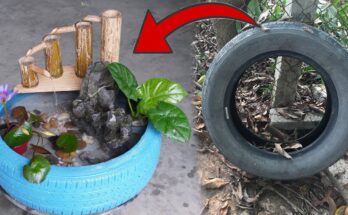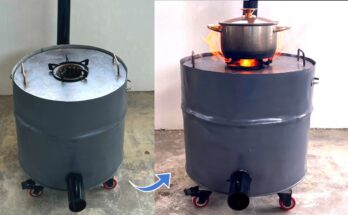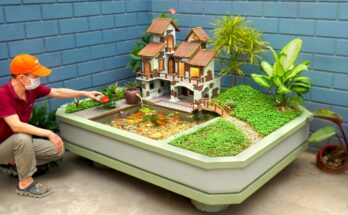Creating a pellet maker at home is a practical and rewarding project, especially for those interested in producing animal feed, biomass fuel, or nutrient-rich food pellets for plants. One of the simplest and most effective ways to build a homemade pellet press is by repurposing a drill machine. This guide will walk you through the process of making a DIY pellet maker that is functional, cost-effective, and easy to assemble.
Why Make a DIY Pellet Maker?
Pellets are compact, uniform materials often used as animal feed or fuel. They are efficient to store and transport and can be customized based on specific requirements. Commercial pellet makers are expensive, but a homemade version using a drill machine is an affordable alternative for small-scale production.
Materials and Tools Needed
To build your DIY pellet maker, gather the following materials:
- Drill machine (preferably a corded one with high torque for sustained use).
- Metal plate or thick steel sheet (for the die).
- Metal rod or strong cylindrical object (for the roller).
- Bearings (to allow smooth rotation of the roller).
- Wooden or metal frame (to hold the components in place).
- Bolts, nuts, and screws (for assembly).
- Welding tools (optional, for securing parts).
- Safety gear, including gloves, goggles, and ear protection.
Step-by-Step Process
- Design the Die
- Cut a circular metal plate to serve as the die (the component that forms pellets).
- Drill multiple evenly spaced holes in the plate, matching the desired diameter of your pellets. For example, 3–5 mm holes work well for animal feed.
- Prepare the Roller
- Use a cylindrical metal rod as the roller.
- Attach bearings on both ends of the rod to allow it to spin freely. The roller will compress material into the die to form pellets.
- Build the Frame
- Construct a stable frame using wood or metal.
- The frame should securely hold the drill machine, die, and roller in place. Ensure it’s robust enough to withstand the pressure exerted during operation.
- Assemble the Components
- Attach the die to the base of the frame.
- Position the roller above the die, ensuring it presses firmly against the die’s surface.
- Connect the drill machine to the roller using a flexible coupling or direct attachment.
- Test and Adjust
- Secure the drill in the frame and turn it on at low speed.
- Feed raw materials (e.g., ground grains, biomass, or sawdust) into the die.
- Adjust the pressure of the roller against the die to optimize pellet formation.
Tips for Effective Pellet Production
- Material Preparation: Ensure raw materials are finely ground and slightly moist (10–15% moisture) for better binding and compaction.
- Maintenance: Clean the die and roller regularly to prevent clogging.
- Safety First: Always wear protective gear and avoid overloading the drill.
Benefits of a Homemade Pellet Maker
- Cost Savings: Building your own pellet maker costs a fraction of purchasing a commercial machine.
- Customization: Modify the die size and materials to suit your specific needs.
- Sustainability: Use organic waste, sawdust, or crop residues to create eco-friendly pellets.
Conclusion
A DIY pellet maker using a drill machine is a clever solution for small-scale pellet production. With basic tools, affordable materials, and a bit of ingenuity, you can create a versatile machine capable of producing high-quality pellets for various purposes. Whether for feeding livestock, enhancing soil nutrients, or reducing waste, this homemade food pellet press is a valuable addition to any DIY enthusiast’s workshop.
Start building your pellet maker today and take the first step toward efficient, sustainable production!


